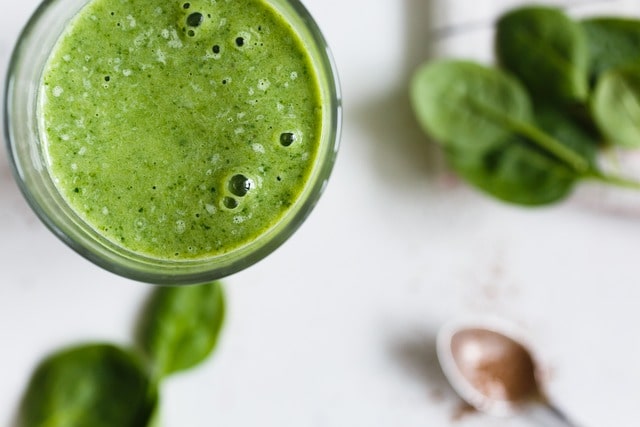Spinach in Poop: Understanding the Digestive Mystery
Have you ever had a startling moment in the restroom where you noticed something green in your stool? As off-putting as it can be, finding pieces of undigested spinach in your poop is not uncommon. But before you rush to the doctor in a panic, let’s unpack the reasons why spinach might be making an encore in your toilet bowl.
The Digestive Process
To understand why we sometimes find undigested foods like spinach in our stool, it’s important to have an overview of the digestive process and how it handles leafy greens:
The Journey of Spinach through Your Digestive System
Oral Phase: It all starts with the grind in your mouth, teeth breaking down the spinach as saliva starts the chemical process of digestion.
Stomach Battle: Spinach faces the powerful stomach acids designed to break food down into a more usable form, called chyme.
Small Intestine Handoff: Next, the spinach enters the small intestine, where it’s time to abstract nutrients for your body’s use.
The Large Intestine Finale: What remains moves to the large intestine, the final arbiter of waste, absorbing water, and compounding undigestible bits into poop.
By the time your spinach finishes this journey, a considerable amount has been digested or absorbed by the body for energy, vitamin and mineral intake. However, not all components of spinach are easily broken down, especially the cellulose found in plant cell walls.
Why Does Spinach Go Undigested?
There are a number of reasons why you might see spinach taking a return trip from your body:
Insoluble Fiber
Role of Fiber in Diet: Fiber is present in all plant-based foods and while being a boon for the digestive system overall, increasing stool bulk, and promoting gut health, it has its complexities.
Why Spinach Passes Through: Spinach, in particular, contains a high level of insoluble fiber—the type our digestive enzymes cannot completely break down.
Chewing Habits and Digestion
The Importance of Chewing: If spinach is not chewed thoroughly, larger pieces reach the stomach and can bypass digestion mostly intact.
Potential for Unease: Not chewing properly might not only leave more leafy evidences in your stool but could also lead to indigestion froc= m poorly broken-down foods.
Speed of Digestion
Rapid Transit: Sometimes our bodies are pushed through the digestive process faster than usual due to a variety of factors from illnesses to medications, impacting how well our food is digested.
The Symptoms: Diarrhea or a very short transit time can prevent the body from fully processing foods like spinach.
Is it Bad to Have Spinach in Your Poop?
Finding spinach-looking bits in your stool can appear concerning, but in most cases, it’s perfectly normal:
A Sign of Healthy Eating
Rich in Nutrients: Spinach remains one of those superfoods packed with vitamins and minerals important for overall health.
Paradox of Fiber: The very fact that the leafy greens can be spotted in your stool is a rough indication that you are ingesting fibrous, healthy foods which are beneficial for your gut.
Consider Your Overall Digestive Health
Individual Differences: Our bodies each contain a unique microbiome, and so possible intolerance or sensitivities to certain fibers could result in visibly undigested food.
Listening to Your Body: Regularly seeing undigested foods might warrant consideration about food choices, digestion aids, or even discussing your concerns with a healthcare provider if you notice discomfort or other symptoms.
When Should You Worry?
While typically a benign phenomenone, there are times when undigested spinach in your poop signals potential issues:
Potential Medical Concerns
Malabsorption: ConsistentPresence of large quantities of undigested food could point towards malabsorption syndromes or conditions like Crohn’s Disease.
The Warning Signs: If accompanied by other symptoms like unintended weight loss, chronic diarrhea, or abdominal pain, it’s wise to consult a doctor.
Unusual Colors and Stool Health
Beyond Green: Pay attention to any changes in the color of your poo outside of green (such as red or black), which could indicate bleeding or other gastrointestinal concerns.
Stool Chart Consultation: Using a stool chart might help elucidate what’s normal and when to consiered professional advice.
How to Promote Better Digestion of Spinach
Want to enjoy your spinay,h, butt not when they make a comeback in the bathroom? Here are some pro tips:
Chewing Techniques
A Mindful Approach: Take your time while eating, thoroughly chewing the spinach to aid in digestion.
Smaller Bites: Consider cutting your spinach into smaller pieces before consuming to reduce the workload of your digestive system.
Food Pairings and Cooking
Cook It Down: Light steaming or sautéing spinach can start the breakdown process, making it easier for your body to dig in.
Smart Combining: Pair spinach with foods high in digestive enzymes, such as pineapple or papaya, for an enhanced breakdown.
Conclusion
While it might catch you off-guard, seeing bits of spinach in your poop is typically a normal reflection of your body’s interaction with this leafy superfood. If your green discoveries are not causing additional discomfort, they can likely be interpreted as signs of a healthy diet loaded with plants and their natural fibrous goodness. However, if abnormal symptoms accompany these green guest appearances, it’s important to address them with a healthcare professional. Remember, when it comes to digestion, you are what you don’t poop, so listen closely to what your stool is telling you about the goings-on in your own personal ecosystem.

